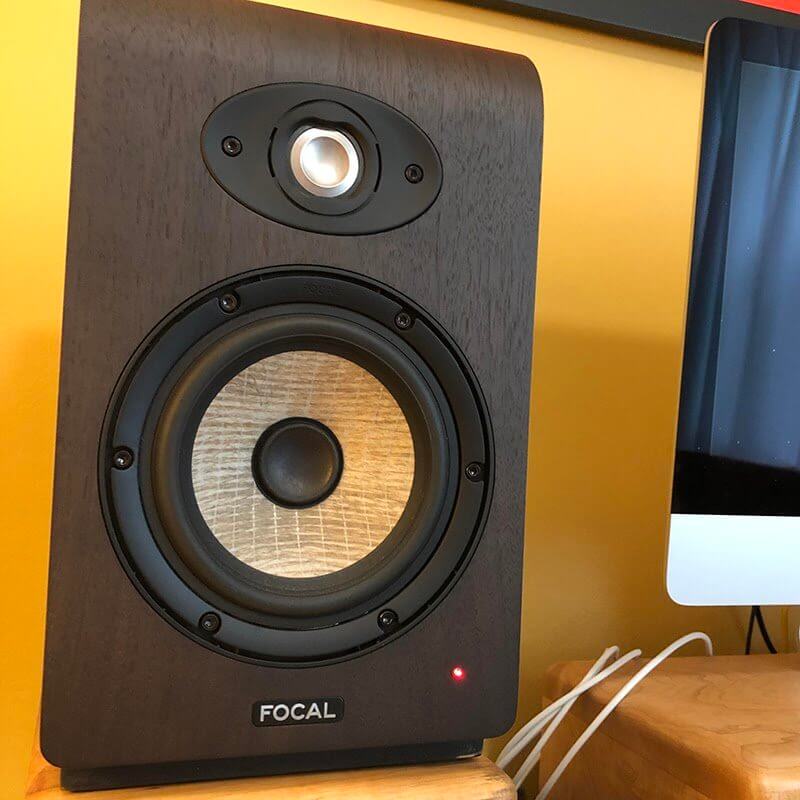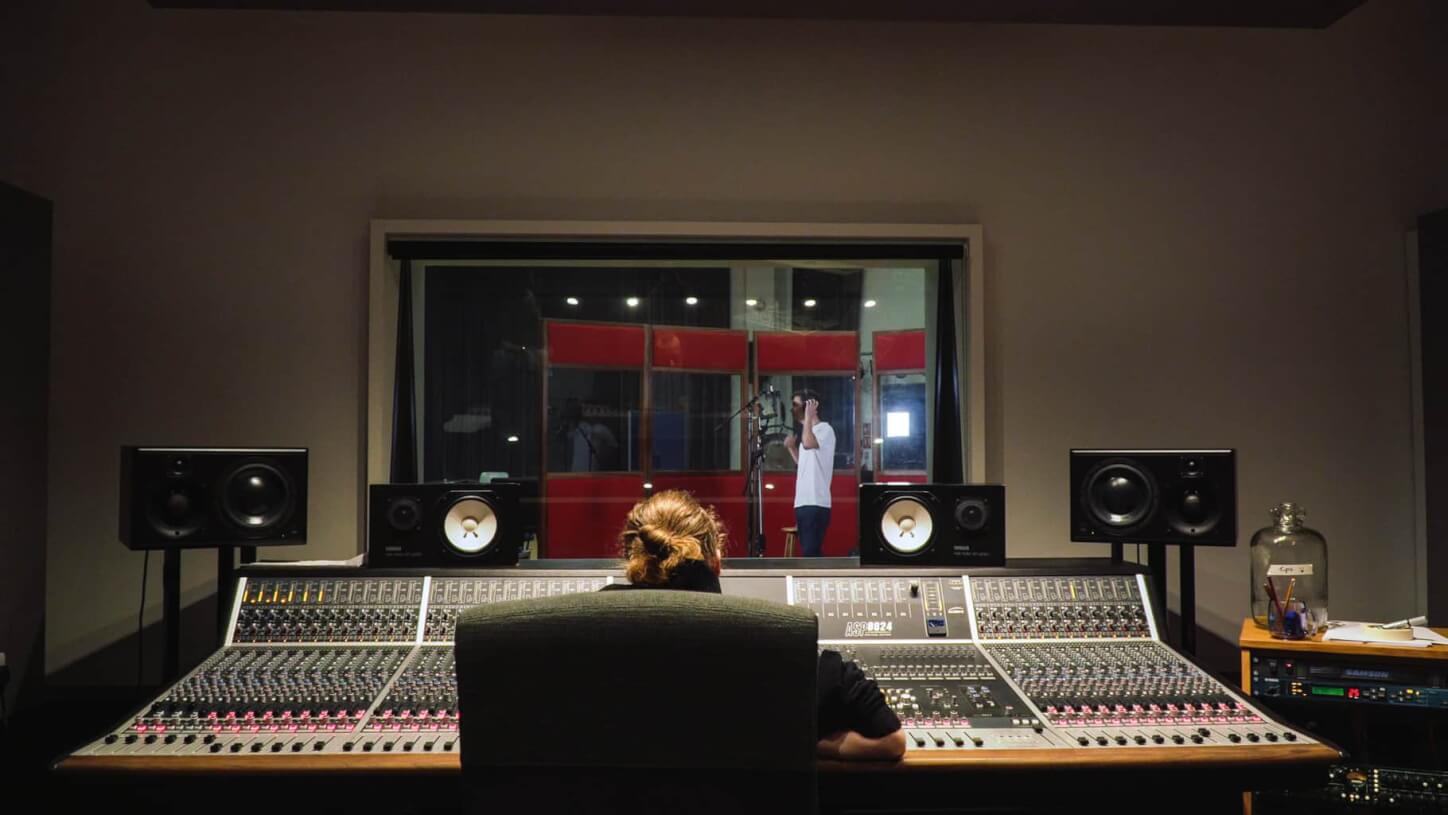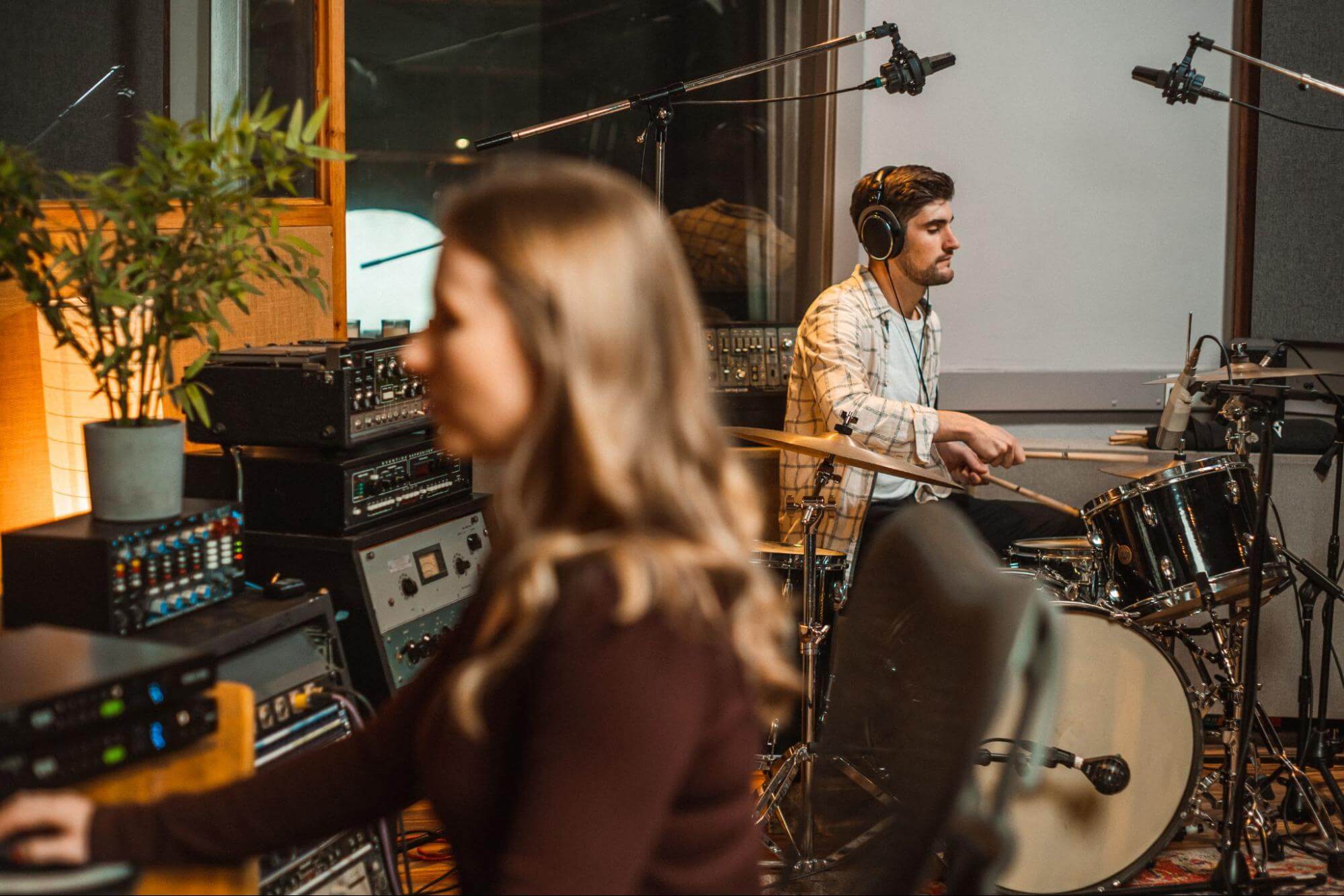Acoustic Noise
Acoustic Noise
This type of noise can take many forms and is one of the most difficult to mitigate. While some solutions are expensive, patience, creativity, and determination can lead home studio owners to effective solutions.

I want to begin with monitoring. In short, if you cannot really hear what is going on, you will miss problems that are likely to be magnified and impossible to isolate in later stages of production. First, get the best D/A converter or interface and monitors you can get (sized appropriately for your room), then do everything within your means to control acoustic reflections and resonances in that environment. Of course, you should also do everything within your means to acoustically isolate your listening environment from other rooms in the same building and from the world outside. You will then have a solid baseline to work from.
In terms of tracking, the influence of room acoustics on recordings may be reduced with careful mic placement and consideration of signal-to-noise ratio. I also encourage my clients to either procure commercially produced acoustic treatments or fabricate their own. Attaching a microphone to a portable reflection filter of good quality can also be very effective in absorbing and diffusing room reflections that can obscure the direct sound from the source.
High-pass filters can also be very useful in tracking. If a vehicle passes by or someone in another part of the building slams a door, some mics will pick up the low-frequency transients and rumbles with ease. Even if the A/D converters in your audio interface do not clip as a result, the tone or dynamics of the source may be altered. A high-pass filter on a mic or preamp can remove a lot of unnecessary noise from your recordings and help prevent A/D clipping. Some would argue that using a high-pass filter in tracking can remove important low harmonics from the source but in my opinion, something like an 80 Hz high-pass filter does not pose a problem for any source except kick drum or bass guitar.
Beyond the more obvious tips of silencing mobile phones, I also suggest temporarily disabling climate-control units and other appliances with motors for the duration of tracking. Water running through interior plumbing can be surprisingly loud and should also be considered. Finally, tracking late at night may result in less ambient noise from outdoors and a quieter power grid.
Electrical Line Noise
Electrical Line Noise:
This type of noise is widely unknown, misunderstood or simply disregarded. However, it is a topic worthy of consideration, especially when working in home studios.
Every device connected to the power grid in your area causes distortions in the electricity you use. Those distortions come from switching on power supplies, “smart” meters, electric motors, lighting systems, phone chargers, and countless other devices. The cumulative effect of dirty power on a standard AC power waveform is not only measurable; it can also be audible as it finds its way into the audio path in the form of clicks, pops, hissing, or buzzing.

Most manufacturers of studio gear take steps to prevent electrical line noise from entering the audio path in their respective products. Transformers, voltage regulators and capacitors are often used with careful grounding schemes to achieve lower noise and more stable operation. However, not all gear is created equal in this regard and grounding can get complicated when multiple pieces of gear are connected together. Indeed, ground loops are another form of electrical line noise.
One relatively cost-effective way to minimize or eliminate electrical line noise is to use a passive power conditioner. This goes beyond a simple surge protector. A power conditioner filters out the noise from the AC power before it gets to your gear and becomes a part of your recording. Some power conditioners use transformers which can restrict current draw in gain stages and subsequently choke dynamics while generating noise of their own. A passive power conditioner will just do what it needs to do and not get in the way.
EMI/RFI Noise
EMI/RFI Noise:
In our modern world, man-made sources of electromagnetic energy are increasing rapidly. All of that stray energy can find its way into the audio path during tracking, mixing, and mastering.
Radio-frequency interference (RFI) comes from terrestrial radio transmitters and a full range of wireless communication devices. Add that to the electromagnetic interference (EMI) or fields generated by transformers and all manner of high-voltage wiring that surrounds us. Since we cannot get entirely away from it, proper shielding of electronic devices, audio cables, and power cords is the solution.

Some studio tools employ a true Faraday-cage style of shielding either in the enclosure itself, around the power transformer, or both. That kind of shielding can be quite effective in blocking or notably attenuating EMI/RFI affecting components and wiring in the audio path inside the device.
In my estimation, audio cables between microphones and preamps or between any other analogue audio components are most commonly the medium by which unwanted noise is introduced into recordings. Quality audio cables may feature conductor windings designed to help reject unwanted noise as well as a layer of shielding around the conductors. If a cable is abused and the internal shielding is compromised, the cable may still pass audio signals but may also become an awesome antenna for a wide range of ambient electromagnetic energy. So, before you blame a bad tube, you may want to check your audio cables first.
Power cords are also worth looking at. Most standard power cords bundled with your gear are not shielded. Of course, if you have such cords in close proximity to other unshielded cords and audio cables with inadequate shielding, they can be another source of the noise. Fortunately, the most common type of shielded power cords made for gear with internal power supplies are relatively inexpensive. While replacing unshielded power cords with the shielded variety will not entirely solve a noise issue in a studio, every countermeasure in the fight against unwanted noise will contribute to improved audio quality.
Device Self Noise
Device Self Noise:
To one extent or another, all audio electronics introduce noise into the audio path. At times this type of noise is obvious but in other cases, the source is elusive if other causes of unwanted noise are not first addressed.

Once you have taken all reasonable steps to reduce or eliminate extraneous acoustic noise, electrical line noise, and EMI/RFI noise, you can more easily identify a self-noise issue. Sometimes the noise in the audio path is generated by cheap parts in a circuit that drift out of spec with audible consequences. Sometimes the noise is a result of a poor internal grounding scheme. Sometimes audible noise is the result of inadequate internal power supply shielding. You may need to simply replace a tube or you may need to replace the entire component with a quieter alternative.
Summary:
Summary
The process of diagnosing and overcoming unwanted noise in your recordings may be extensive but the time and effort saved in editing and mixing will more than offset the initial investment. The quality of your productions will also benefit from getting things right at the source.
If you need more personalized assistance in dialling in your home or project studio, please contact me to schedule a remote consultation.

About the author
Stefan Konstantopoulos is a Nashville-based music producer, remote production consultant, mentor, and gear reviewer. Trained as an audio engineer, he is experienced in producing demos and commercial releases including music for sync.
www.producerstefan.com
Our Products
-

2in | 2out Audio Interface
-

10in | 6out Audio Interface
-

10in | 14out Audio Interface
-

20in | 24out Audio Interface
-

24in | 32out Audio Interface
-

2in | 2out Audio Interface
-

4in | 4out Audio Interface
-

24in | 24out Audio Interface
-

Everything you need to start recording
-

8 Channel Smart Preamp with AD/DA
-

8 Channel Mic Pre & ADC
-

8 Channel Mic Pre + Tone Control
-

Modular Analogue Recording Console
-

Small Format Analogue Recording Console
-

Small Format Analogue Recording Console
-

Immersive Audio Interface and Monitor Controller
-

Desktop Monitor Controller


